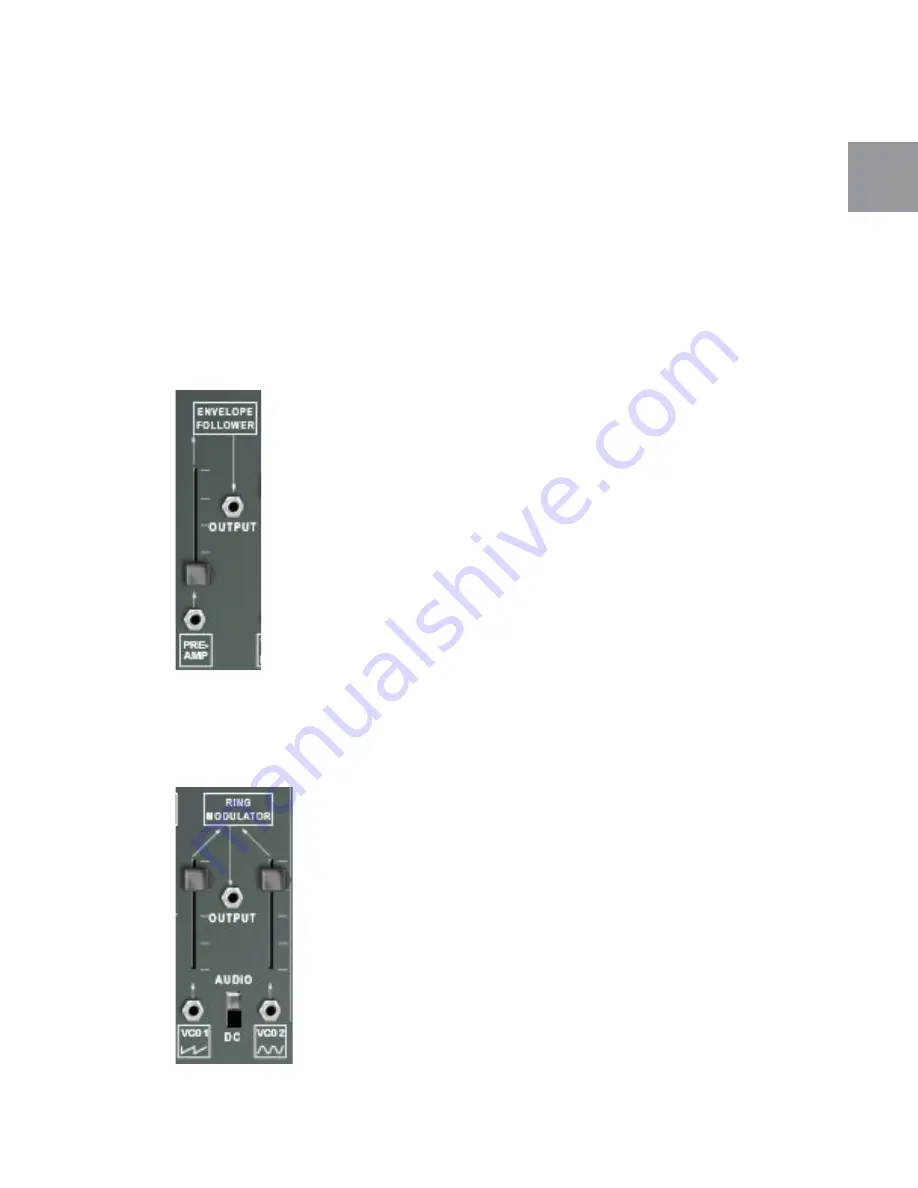
41
TimewARP • User Guide
English
4.8
Envelope Follower
The Envelope Follower generates, from any audio-frequency input, a fluctuating DC output level directly proportional
to the average moment-by-moment input signal amplitude. Its sensitivity is such that, with the input attenuator
wide open, a 1V P-P square-wave will produce a +10vV output. The maximum output is +10vV.
The risetime, or time it takes for the Envelope Follower to respond to any sudden change in the amplitude of the
signal input, is 10 milliseconds to 50% of final value and 30 milliseconds to 90% of final value.
Like all similar circuitry, the Envelope Follower tends to “ride” on low audio frequencies as if they themselves
represented changes in signal amplitude; this is not critical, but has been held to a ripple of less than 1% P-P down
to l00Hz and less than 10% down to 40Hz.
The primary use of the Envelope Follower is with external instruments. Essentially it extracts, from any audio input,
a control signal representing the amplitude-envelope of that input: this signal may control the VCF, VCA, or any of
the VCO’s. The Envelope Follower output is an envelope and can be used in the same fashion as the output from
either of the envelope generators.
The default input to the Envelope Follower is from the preamplifier. When the TimewARP 2600 is configured for
stereo input, it is the first (left) channel preamplifier output.
4.9
Ring Modulator
The Ring Modulator is essentially a multiplier; from its two inputs A and B it produces the output function A x B
/ 5. The kind of transformation this effects on input signals depends to a large extent on what they are and on
whether the modulator is AC or DC coupled to them. The type of coupling is selected by the Audio/DC switch at
the bottom of the modulator.









































